The Story of Kenya Coffee Bean the moral characteristics of Starbucks Kenya Coffee Bean Packaging pattern
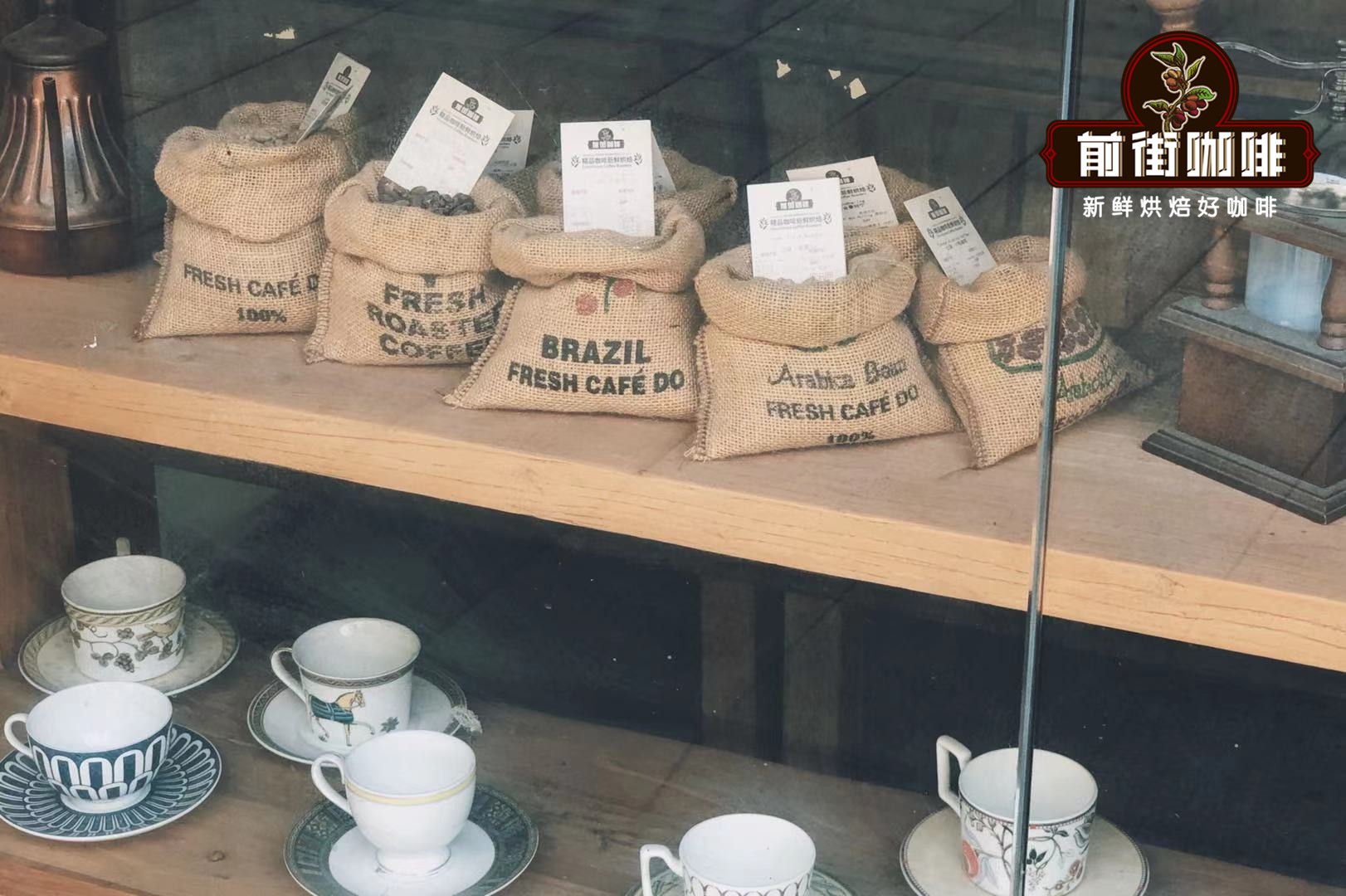
Professional coffee knowledge exchange more coffee bean information please follow the coffee workshop (Wechat official account cafe_style)
Kenyan coffee has always been famous for its clean and thorough sour virgin fruit. For example, Kenyan coffee beans are also introduced into Starbucks stores, and elephants are used as coffee bean packaging covers, while elephants are the only animals in Africa. We all know that the image of elephants is very thick, so many people will describe the flavor of Kenyan coffee beans as African elephants, expressing its thick taste. And the formation of Kenyan coffee flavor Qianjie Coffee is also due to Kenya's unique treatment and coffee varieties, then Qianjie Coffee will come to popularize some relevant stories about Kenyan coffee beans.
History of coffee in Kenya
Kenya is located in East Africa, bordering Ethiopia. The history of coffee in Kenya is not as deep as that of Ethiopia. Coffee was introduced near the 20th century, during which coffee almost circled the earth before it returned to Africa, and at that time the coffee industry began to have a new change. Kenya can be said to be the witness and promoter of this change. Kenya is different from Ethiopia, when coffee was introduced by Britain, a colonial power, and the coffee economy was developed during the colonial period, and the whole coffee system tended to be carefully managed. The selection, grading and treatment of Kenyan coffee far exceeded that of many coffee producing countries at that time, and it was not until decades later that other countries realized the advantages of fine management and followed suit.
Formation factors of coffee bean flavor in Kenya
In addition, Qianjie Coffee believes that many coffee lovers first come into contact with Kenyan coffee beans at Starbucks. Starbucks' Kenyan Coffee was launched in 1971, and the African elephant on the package has long been used as the iconic pattern of Kenyan coffee. For example, Kenyan acid has been talked about in the coffee industry, such as the current Qianjie coffee shop has also put on the shelves of several Kenyan coffee beans are very good.
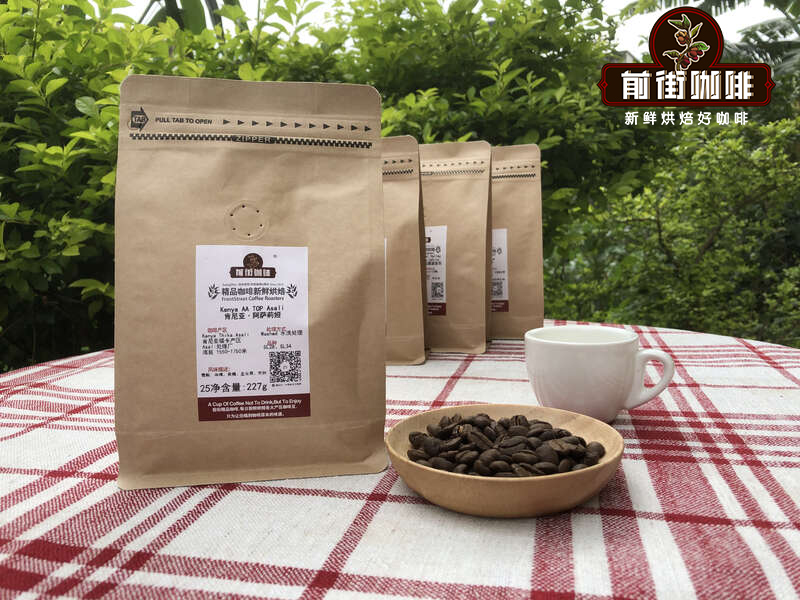
So what makes Kenyan coffee so unique? Experienced coffee lovers all know that the flavor of a coffee bean mainly depends on the geographical location of the coffee producing area, soil, climate, coffee variety, and treatment, which can be summed up as the producing area, variety, and treatment. then Qianjie Coffee will introduce Kenyan coffee beans with these three major factors.
Kenyan coffee producing area
Kenya is located in eastern Africa, the equator runs through the central part of the country, and the Great Rift Valley stretches north and south. It is bordered by Somalia to the east, Tanzania to the south, Uganda to the west, Ethiopia and Sudan to the north, and the Indian Ocean to the southeast. There are many plateaus in the territory, with an average elevation of 1500 meters. The central peak of Kirinaga (Mount Kenya) is 5199 meters above sea level and the top of the mountain is covered with snow, making it the second highest peak in Africa.
Kenya is a tropical region, with two rainy seasons a year and two harvests, with 60% concentrated from October to December and 40% from June to August. Coffee is mainly grown in volcanic areas from the capital Narobi to the mountains of Kenya at an altitude of 1600-2100 meters. This height is suitable for the development of coffee bean flavor, because the mountain temperature is lower, the growth is slow, the aroma components of coffee beans have been fully developed, the sour taste is more obvious, and the texture is harder.

Secondly, according to Qianjie Coffee, it is known that the main coffee producing areas in Kenya are six major coffee producing areas, including: Thika, Kirinyaga, and the west side of Mount Kenya (Mt. Kenya West, Nyeri, Kiambu, Muranga. The harvest periods of the six major producing areas are all from October to December (the main production season) and from June to August (the by-product season).
Sika (Thika)
Sika is a small town in Nairobi, the capital of Kenya. There are many coffee fields around Nairobi, and Sika is an industrial town, but surrounded by agriculture and waterfalls. There are about 2000 farmers in Sika. The planting history of Kenyan Sika coffee can be traced back to the end of the 19th century. Coffee trees were introduced from neighboring Ethiopia in the north and improved by their own varieties. At present, the common varieties are Bourbon, Kents, SL34, SL28, Typica and Riuri 11. Now about 90% of the coffee varieties are SL34 and SL28. The new variety Batian published in 2007 has not been planted in large quantities. The flavor of the region has bright acidity, thick berry juice and honey sweetness.
Altitude: 1550mi 1750m
Variety: sl-28,sl-34
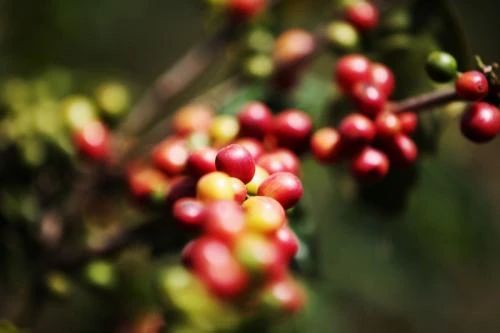
Qilin Yajia (Kirinyaga)
Located on the hillside of Mount Kenya, close to Nyeri, Kirin Yaga is famous for its strong, rich and solid-tasting coffee. Together with Nyeri, it is recognized as the two best producing areas in Kenya. Most of the producers in this area are small coffee farmers who join the cooperatives, while the cooperatives play an integrated role, providing washing plants, and coffee farmers send the coffee fruits to the cooperative processing plants for processing. The flavor of this area has bright acidity, moderate grease and delicate sweetness.
Altitude: 1300 to 1900 m
Varieties: SL-28, SL-34, Ruiru11, Batian.
The west side of Mount Kenya (Mt. Kenya West)
The western side of Mount Kenya includes the Bungoma district of Kisii and Mount Elgon. Chesi is located in southwestern Kenya, not far from Lake Victoria, is a relatively small producing area, most coffee beans come from free small-scale producers of common cooperatives. The coffee flavor in this area is very different from that in the central region, which has roasted nuts and soft acidity and is popular with buyers who do not like bright acidity.
Altitude: 1450 to 1800 m
Varieties: SL-28, SL-34, K7

Nieli (Nyeri)
Nieli, located in central Kenya, is home to the extinct volcano Mount Kenya. The red soil in this area breeds the best coffee in Kenya. Agriculture is extremely important here; coffee is the most important crop. Common cooperatives made up of small farmers are more common than large manors. There are two harvests in this area, but coffee from the growing season is usually of high quality. With a bright berry juice, citrus and faint floral aromas, the coffee beans grown here make Kenyan coffee famous all over the world.
Altitude: 1200-2300 m
Varieties: SL-28, SL-34, Ruriu11, Batian
Qianbu (Kiambu)
This producing area in central Kenya has the highest coffee growing area in the region. However, some coffee trees at high altitudes can get Dieback and stop growing. This producing area is named after the town of Nakuru. Coffee is grown here in the form of both manors and small farmers, but the yield is relatively small.
Altitude: 1850-2200 m
Varieties: SL-28, SL-34, Ruiru11, Batian

Mulanga (Muranga)
The Muranga producing area belongs to the Central Province, where there are about 100000 coffee farmers. This inland producing area was the place of settlement chosen by the first missionaries because Portugal banned them from living in coastal areas. It is also another producing area that benefits from volcanic soil, with more small coffee farmers than manors. The coffee in this area has bright acidity and thick fruit juice to the touch.
Altitude: 1350 to 1950 m
Varieties: SL-28, SL-34, Ruiru11, Batian
Kenyan coffee varieties
According to Qianjie Coffee, the common varieties of coffee in Kenya are SL28, SL34 and Ruiru11. It is precisely because of these Kenyan coffee varieties that make the Kenyan coffee flavor show a unique sour and black plum flavor, then Qianjie Coffee will introduce the characteristics of these Kenyan varieties.

SL28
SL28 is a single variety selected from the drought-resistant population of Tanganyika in 1935. SL28 varieties are suitable for middle and high altitude areas and have the ability of drought resistance, but they are very sensitive to the main diseases of coffee. The appearance of SL28 bean is similar to that of bourbon variety, and it is round and thick. In recent years, genetic tests have confirmed that SL28 belongs to the bourbon gene group.
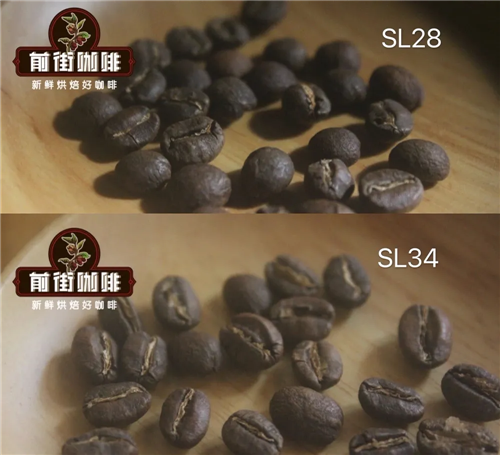
SL34
SL34 was first selected at the Scott Agricultural Laboratory in Kenya in the late 1930s. SL34 was selected from a tree in the Kabete Loresho property in Kenya, which is called the "French missionary". The appearance of SL34 beans is similar to that of iron card varieties, and the beans close to the shape of iron card beans are screened from Kenyan beans in the front street. The beans are long and oval in shape and look flat on the side. In recent years, genetic tests have shown that SL34 is related to the genome of iron pickup.
Kenyan coffee treatment method
Ruiru11
Ruiru appeared after SL28 and SL34, and Qianjie learned that it was in the 1970s, when Ruiru began to try to cultivate different CBD and rust-resistant varieties. The result is Ruiru11, which was released in the 1980s. High yield, CBD and antirust properties seem to be the solution to all coffee production problems in Kenya.

Batian
The Batian variety was launched by the Coffee Research Institute (CRI) on September 8, 2010. it is also the latest variety offered in Kenya. It is a further experiment based on lessons learned from Ruiru11. Genetically speaking, it is essentially selected from the backcross between SL28 and SL34, and is closer to SL28 than Ruiru 11. Thus, this eliminates the elements of the problematic Robusta varieties of coffee beans, thus improving the quality of cup testing.
Kenyan coffee treatment method
Secondly, Qianjie Coffee believes that Kenya's unique treatment also magnifies the flavor of black plum and virgin fruit of Kenny coffee beans. This treatment is K72 double washing treatment.
K72 water washing treatment process: after ripe coffee and cherries are washed, peeled, dry fermented for 24 hours, washed, dry fermented again for 24 hours, washed, dry fermented again for 24 hours, and so recycled to achieve 72 hours of strong fermentation, after washing, soak in a clean sink for one night, and start drying in the sun field the next morning. Because the fermentation time is as long as 72 hours, it is called K72.
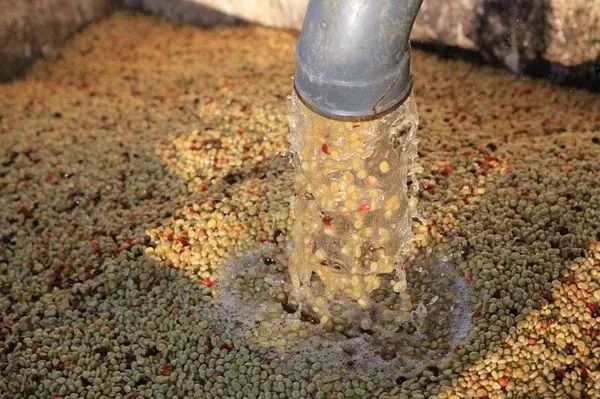
Kenya Coffee Bean grading system
Qianjie Coffee also mentioned above that the Kenyan government attaches great importance to the cultivation of coffee, so it has also developed a set of coffee bean grading methods to ensure the quality of coffee beans. Therefore, according to Qianjie Coffee, Kenya is graded according to the particle size and cup test results of coffee beans. According to the size, shape and hardness of coffee beans, E, AA or AA+, AB, C, PB, TT, T from high to low.
For the two grades of raw coffee beans, AA and AB, a special classification of cup test results was added (not officially recognized by Kenyan countries, made by exporters), followed by TOP, PLUS (+) and FAQ from high to low. The Kenyan Asalia flavor level on the front street coffee bean list has reached the TOP level, but as mentioned earlier, this is not an official grading system, and not every coffee bean collected in front street coffee from several Kenyan producing areas has a flavor grade, so there is no need to worry too much about this piece, generally reaching the AA level and AB level, the flavor is actually very high quality by default.

These are the three major factors that can affect the flavor formation of Kenyan coffee. Next, Qianjie Coffee will share the flavor characteristics of several Kenyan coffee beans currently introduced in Qianjie coffee shop.
Front street coffee Kenya Azaria coffee beans

Country: Kenya
Production area: Asali (Honey processing Plant)
Altitude: 1550-1750m
Variety: SL28,SL34
Treatment method: 72 hours washing treatment
Flavor: Sydney, black plum, brown sugar, virgin fruit, Brin
Front Street Coffee PB Coffee beans in Sassini Estate, Kenya

Country: Kenya
Producing area: Sassini Manor
Altitude: 1680m
Variety: SL28,SL24,riuru
Treatment method: 72 hours washing treatment
Flavor: Virgin fruit, almonds, black plums, honey, grapes
"Qianjie Coffee Baking parameters sharing"
Asalia coffee beans, Kenya:
This bean is full and round, and Qianjie coffee is roasted lightly in order to fully show its bright and mellow acidity.

Yangjia 800N semi-direct fire, bean dosage 480g: furnace temperature to 160 degrees Celsius into the pot, throttle open 3, firepower 120. Temperature recovery point: 1 temperature rising to 130 degrees, throttle opening 4. Baking to 6: 00 ", temperature 154.6 degrees, bean surface turns yellow, grass smell disappears completely, dehydration is complete.
When the bean surface appears ugly Hu wrinkles and black markings, the smell of toast obviously changes to the smell of coffee, which can be defined as a prelude to an explosion. At this time, it is necessary to listen carefully to the sound of the explosion point, to 9: 28 ", the throttle remains the same, and the development time of the explosion is 2: 20". Put the pot at 193.8 degrees.
Kenya Sassini pb coffee beans:
This full-bodied coffee bean due to high altitude, hard beans, at first with a higher temperature climb, turn yellow point in about 5 minutes, and then reduce the firepower into the Mena reaction, again reduce the firepower to prolong the Mena reaction time. When the first burst begins, it is highly endothermic, so it is recommended to maintain heat at this stage to prevent stagnation. The development of first explosion takes more time, which is helpful to reduce acidity and develop flavor.

The baking machine Yangjia 800N (300g baking capacity), the furnace temperature 170℃, the firepower 100and the throttle opening 3; the temperature recovery point is 390 ℃, and the throttle is open to 3.5.When the furnace temperature is 140℃, the bean meter turns yellow, the grass smell disappears completely, and enters the dehydration stage. 7: 14 "after dehydration, the firepower and throttle remain the same." 7: 30 "is the appearance of wrinkles and black markings on the bean table, and the smell of toast changes to coffee, which is a prelude to an explosion. At 8 '20`, the blast begins, the throttle opens 4, and the firepower is reduced to 50. After an explosion, the development time is 1: 50 ". At 188 ℃, the firepower is reduced to 30, and the temperature rises to 193.3 ℃.
Suggestion on brewing coffee in Qianjie

Filter cup: V60 or cake cup
Water temperature: 90-91 ℃
Powder / water ratio: 1:15
Degree of grinding: fine grinding (the pass rate of Chinese standard No. 20 screen is 80%)

Flushing and cooking technique: segmented extraction. Steam with 30 grams of water for 30 seconds, small water flow around the circle to 124 grams for sectional injection, when the water level is about to expose the powder bed, continue to inject water to 228 grams to stop injection, and so on when the water level drop is about to expose the powder bed, remove the filter cup, (the time of steaming starts) the extraction time is 1 minute 39 percent 55 ".

Azaria coffee bean flavor: wet aroma with ripe tomato and flower aromas, imported virgin fruit and black plum flavor, bright acidity, clean and rich taste, outstanding middle sweetness, juicy, raspberry and yellow sugar on the finish, and green tea aroma.
Sassini coffee bean flavor: it smells floral, with sour notes of virgin fruit, citrus, nuts, cream in the middle, brown sugar, cocoa and oolong tea. The flavor level is rich and the flower fragrance is obvious.
The above are the flavor characteristics of these two coffee beans in Qianjie coffee shop. I hope it can help you to have a better understanding of Kenyan coffee, so that you can avoid stepping on mines when choosing coffee beans from different producing areas in the future.
For more boutique coffee beans, please add private Qianjie coffee on Wechat. WeChat account: kaixinguoguo0925
Important Notice :
前街咖啡 FrontStreet Coffee has moved to new addredd:
FrontStreet Coffee Address: 315,Donghua East Road,GuangZhou
Tel:020 38364473
- Prev
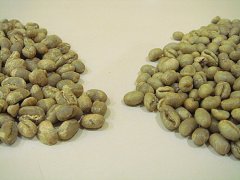
Flavor characteristics of coffee beans in Xueqi map processing factory in Yega Xuefei coffee producing area, Ethiopia
Sunburn Yega Chuefei G1 snow map Mestawe Asfa processing plant EthiopiaNaturalYirgacheffeChelelektu-MestawotAsefa high altitude clear smell of jasmine, with warm and rich comprehensive fruit juices (strawberry jam, passion fruit
- Next

What's the taste of mocha coffee? why is my mocha so bad?
Professional coffee knowledge exchange more coffee bean information please pay attention to the coffee workshop (Wechat official account cafe_style) hand mocha and Italian mocha the difference between mocha coffee flavor and characteristics of mocha coffee is also bitter and sweet past and memories, give it a cup of sweet coffee as a description of the age do not dare to taste bitter, not know how to return to sweet when you are old. When I was a child, I didn't drink coffee and didn't like its bitter taste. graduation
Related
- Detailed explanation of Jadeite planting Land in Panamanian Jadeite Manor introduction to the grading system of Jadeite competitive bidding, Red bid, Green bid and Rose Summer
- Story of Coffee planting in Brenka region of Costa Rica Stonehenge Manor anaerobic heavy honey treatment of flavor mouth
- What's on the barrel of Blue Mountain Coffee beans?
- Can American coffee also pull flowers? How to use hot American style to pull out a good-looking pattern?
- Can you make a cold extract with coffee beans? What is the right proportion for cold-extracted coffee formula?
- Indonesian PWN Gold Mandrine Coffee Origin Features Flavor How to Chong? Mandolin coffee is American.
- A brief introduction to the flavor characteristics of Brazilian yellow bourbon coffee beans
- What is the effect of different water quality on the flavor of cold-extracted coffee? What kind of water is best for brewing coffee?
- Why do you think of Rose Summer whenever you mention Panamanian coffee?
- Introduction to the characteristics of authentic blue mountain coffee bean producing areas? What is the CIB Coffee Authority in Jamaica?

